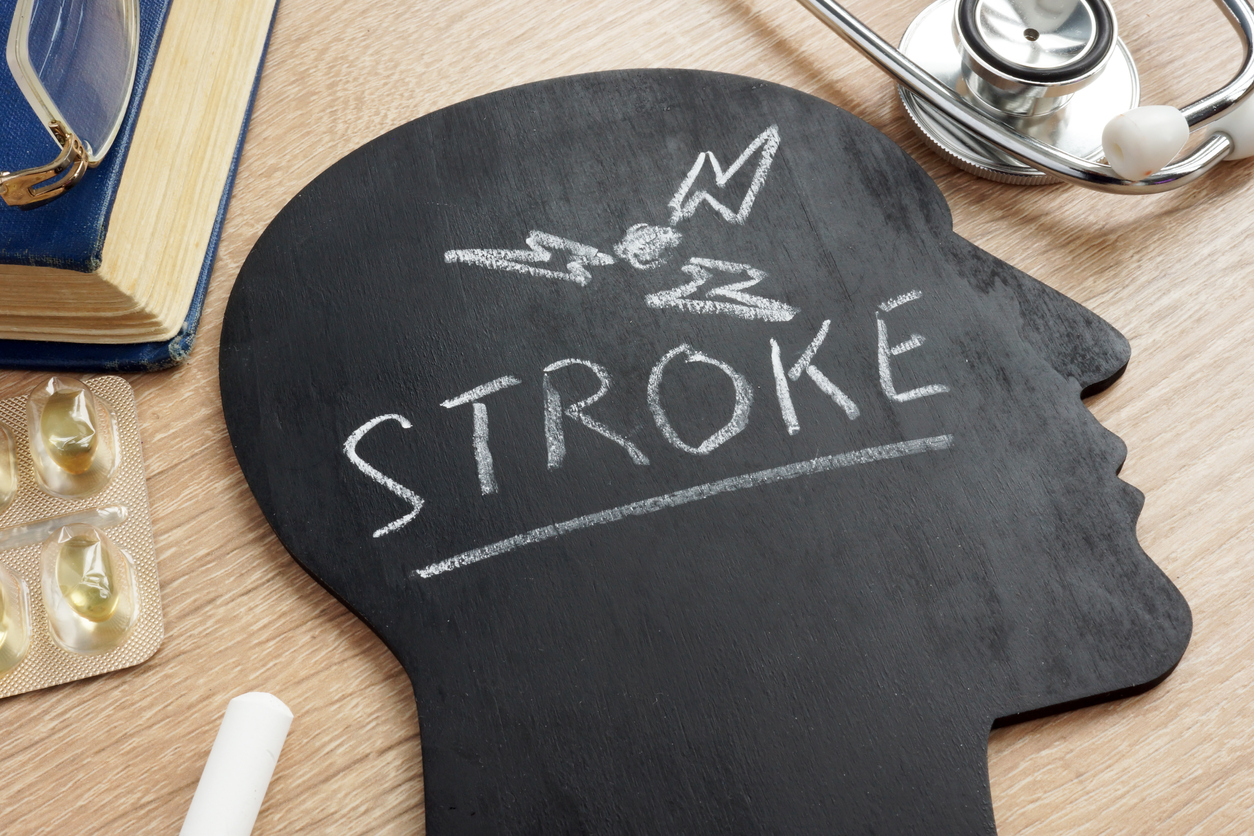A Stroke Is a ‘Brain Attack’

Did you know that stroke is the second-leading cause of death in the world? In America, stroke takes the life of a person every four minutes and is a leading cause of disability.
Since May is National Stroke Awareness Month, it’s a good time to learn more about what a stroke is, the symptoms, how to respond, and ways to prevent it.
Simply put, a stroke happens when blood flow is cut off from the brain, causing brain cells to die. Instead of a “heart attack,” think of stroke as a “brain attack.”
There are three types of strokes:
- The most common is an ischemic stroke, when a clot blocks the blood supply to the brain.
- A “mini-stroke” or transient ischemic attack (TIA) happens when the brain’s blood supply is interrupted only briefly.
- And a hemorrhagic stroke occurs when a blood vessel in the brain bursts.
Depending on what part of the brain is affected and for how long, stroke can result in partial paralysis, vision problems, memory loss, speech impairment, total paralysis and even death.
Lowering Your Risk Demographic factors such as family history, age, gender, and race can all play a role in a person’s stroke risk. But there are things you can do to lower your chances of having a stroke:
- Keep your blood pressure under control. High blood pressure (hypertension) is the most significant risk factor for stroke.
- Don’t smoke. Smoking can thicken the blood and make it more likely to clot.
- Manage your cholesterol. Have it checked regularly and control it with diet, exercise, or medication.
- Prevent or control diabetes. High blood sugar levels can damage blood vessels, so diabetes must be monitored closely.
- Ask your healthcare team about taking aspirin. Some people benefit from a daily dose of aspirin, which helps thin the blood and prevent clots.
Having an overall healthy lifestyle is another key to reducing your risk of stroke: exercise regularly, eat a healthy diet low in sodium, maintain a healthy weight, and limit your alcohol intake.
Warning Signs Signs that someone is having a stroke include dizziness, blurred vision, slurred speech, and intense headaches. But an easy and effective way to remember stroke symptoms, and one that could make all the difference, is the acronym F.A.S.T:
F – Face: Does one side of the face droop or is it numb? Ask the person to smile. Is their smile uneven? A – Arm: Is one arm weak or numb? Ask the person raise both arms. Does one arm drift downward? S – Speech: Is speech slurred? Is the person unable to speak or hard to understand? Ask the person to repeat a simple sentence, such as “The sky is blue.” Can they repeat it correctly? T – Time: Time to call 9-1-1. If someone shows any of these symptoms, even if the symptoms go away, call 9-1-1 and get the person to the hospital immediately. Check the time so you’ll know when the first symptoms appeared.
The information provided within this site is for educational purposes only and is not a substitute for consultation with your physician or healthcare provider.



